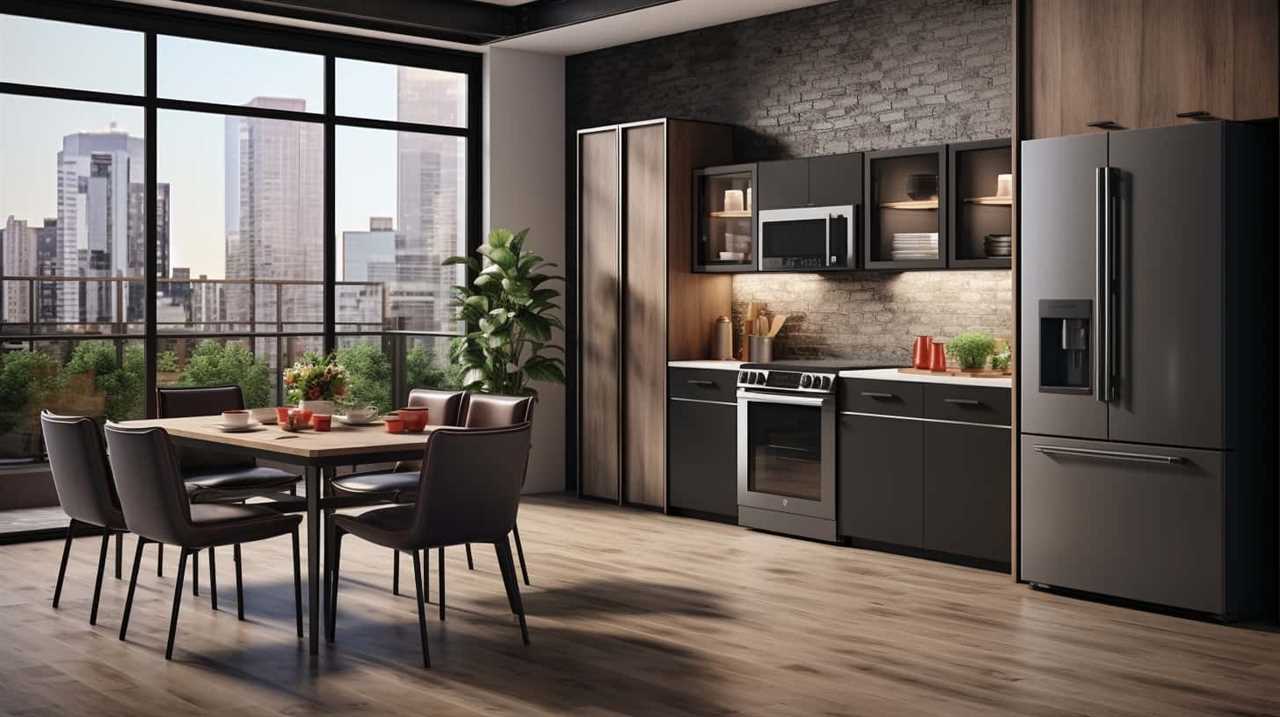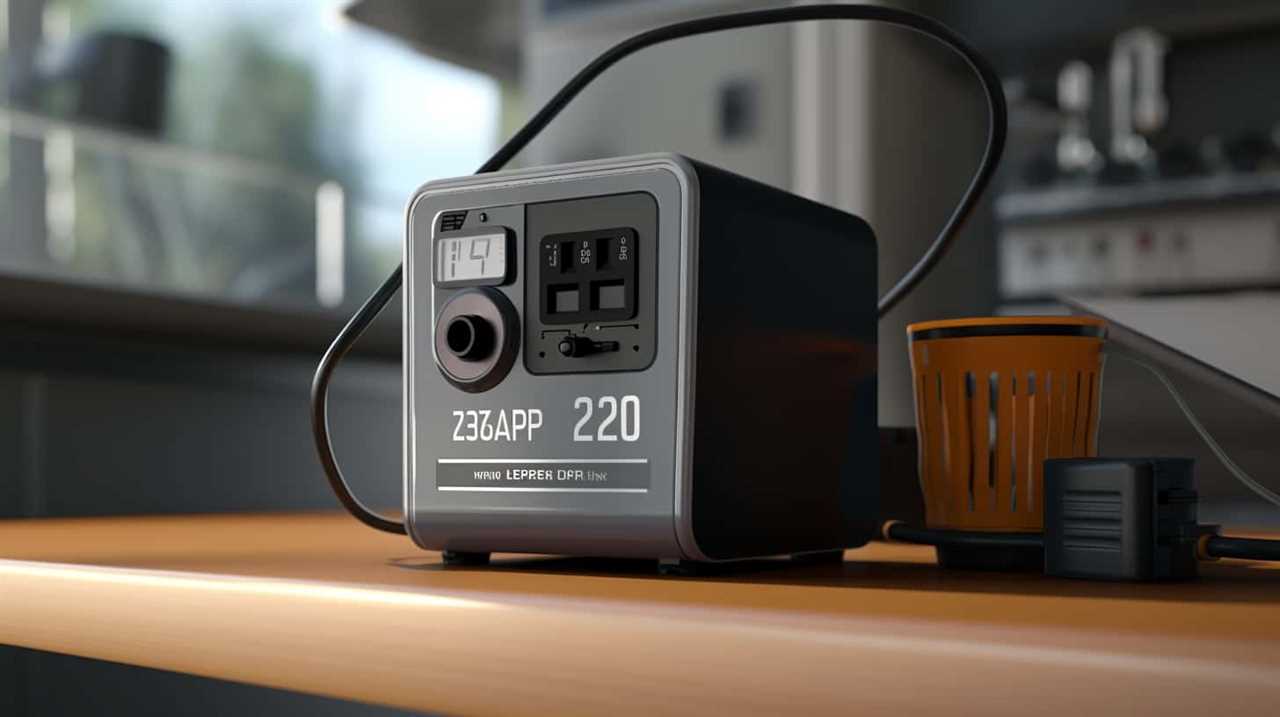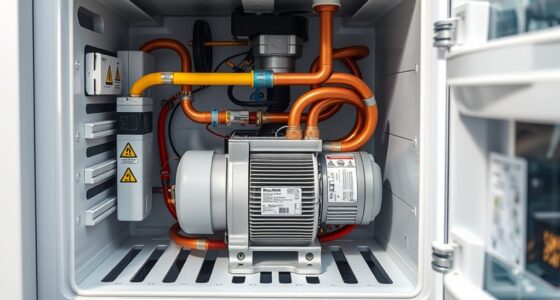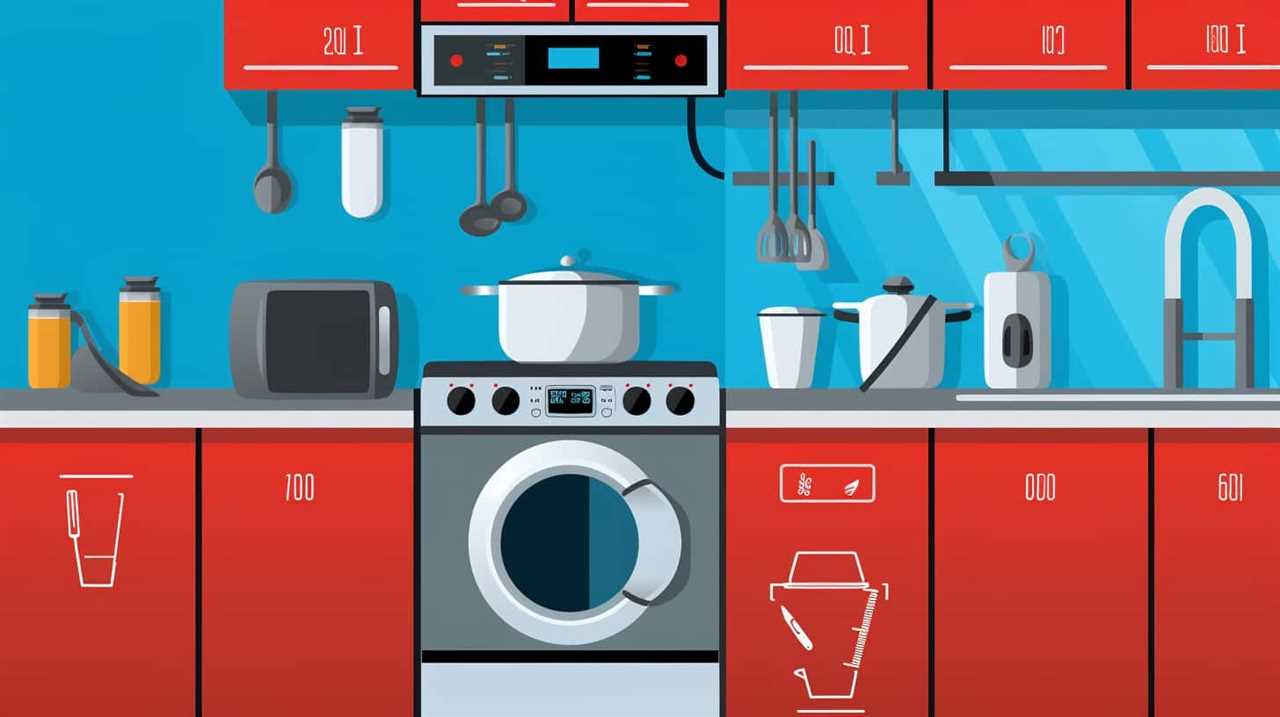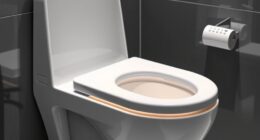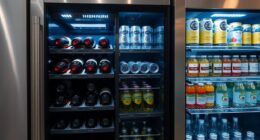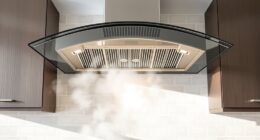Ever thought about the reason behind your appliances generating heat?
Well, let us delve into the fascinating world of heat generation in appliances. We will explore the basic principles behind it, the types of appliances involved, and how electrical energy and mechanical components contribute to this phenomenon.
Additionally, we will discuss the impact on appliance efficiency, the importance of heat dissipation in design, and common causes of excessive heat.
Get ready to master the art of managing heat from your appliances!
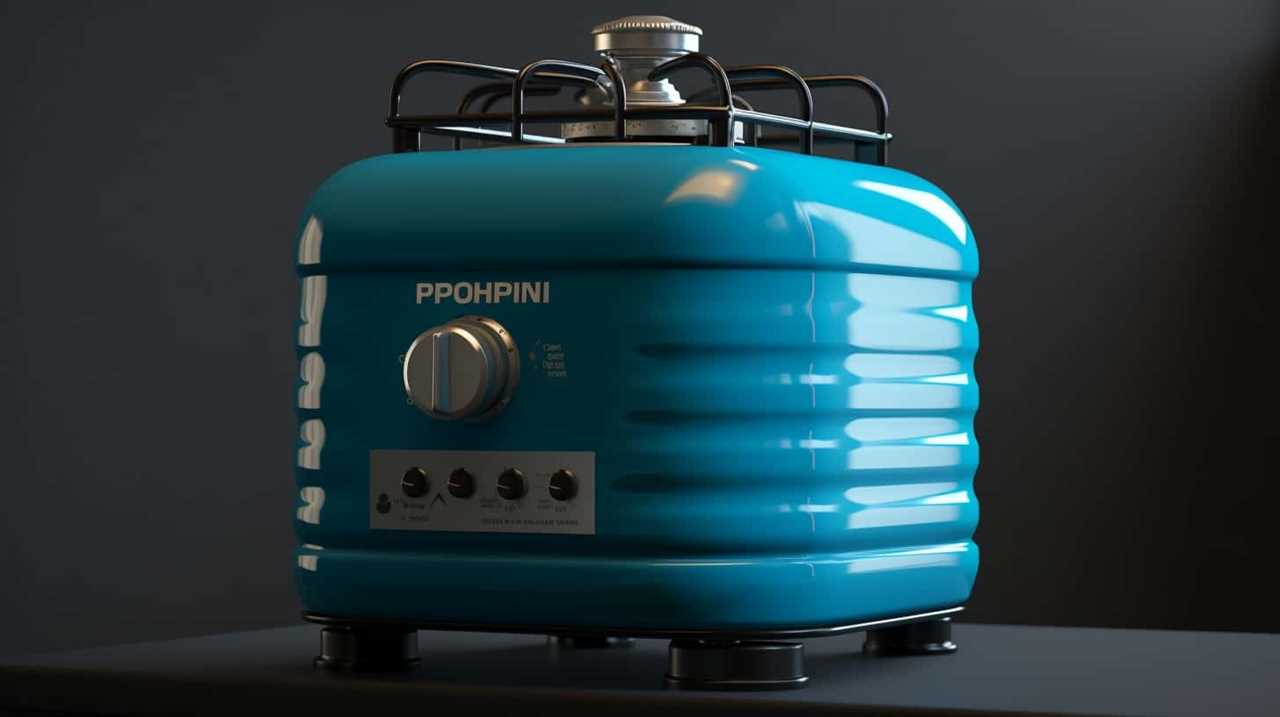
Key Takeaways
- Appliances generate heat through resistance heating, combustion, and heat transfer via heat pumps.
- Different types of appliances, such as electric heaters, gas-powered heaters, wood-burning stoves, heat pumps, and radiant heaters, produce heat using various methods.
- Appliances convert electrical energy into heat, and energy loss through heat is a common characteristic.
- Heat dissipation techniques, such as cooling fans, heat sinks, and ventilation systems, are crucial to prevent overheating and maintain functionality.
Basic Principles of Heat Generation
Appliances generate heat through a variety of heat generation principles. One common principle is resistance heating, where electrical current passes through a resistive element, such as a heating coil or a filament, causing it to heat up and generate heat.
Another principle is combustion, where appliances burn fuel to produce heat. This is commonly seen in gas stoves and furnaces.
Additionally, appliances may use heat pumps, which transfer heat from one place to another using refrigerants.
Once heat is generated, it needs to be dissipated to prevent overheating. Heat dissipation techniques include conduction, where heat is transferred through direct contact, and convection, where heat is transferred through the movement of fluids or gases.

Appliances may also use heat sinks, which are designed to absorb and dissipate heat efficiently.
Types of Appliances That Produce Heat
After understanding the basic principles of heat generation, we can now explore the various types of appliances that produce heat.
There are several types of heating appliances that utilize different heat sources to generate warmth. One common type is the electric heater, which converts electrical energy into heat energy using a resistive element.
Another type is the gas-powered heater, which burns natural gas or propane to produce heat. Wood-burning stoves and fireplaces are also popular heating appliances that generate heat through combustion of wood.

Heat pumps are another category of heating appliances that extract heat from the air or ground and transfer it indoors.
Finally, there are radiant heaters that use infrared radiation to warm up objects and people directly.
Understanding the different types of heating appliances and their heat sources can help us choose the most suitable option for our heating needs.
Electrical Energy Conversion and Heat
When it comes to appliances, one important aspect to consider is the conversion of electrical energy into heat. This conversion process often results in energy loss through heat, which is a common characteristic of many appliances.

Understanding the efficiency of heat production is crucial in evaluating the overall performance and energy consumption of these appliances.
Energy Loss Through Heat
Through the process of electrical energy conversion, appliances generate heat as a result of energy loss. This heat is produced due to various heat transfer mechanisms that occur within the appliance.
Heat transfer can happen through conduction, convection, and radiation. Conduction involves the transfer of heat through direct contact between materials, such as when a heating element transfers heat to a cooking pot. Convection occurs when heat is transferred through the movement of fluids, such as in a fan-forced oven where heated air circulates to cook food evenly. Radiation is the transfer of heat through electromagnetic waves, like the heat emitted by an infrared grill.
To prevent overheating, appliances employ heat dissipation techniques such as cooling fans, heat sinks, and ventilation systems. These techniques help to maintain the appliance’s functionality and prevent damage caused by excessive heat buildup.

Efficiency of Heat Production
To understand the efficiency of heat production in appliances, we need to examine how electrical energy conversion plays a crucial role in generating and transferring heat. The efficiency of heat transfer refers to the ability of an appliance to convert electrical energy into heat with minimal energy loss.
Heat management techniques are employed to optimize this efficiency and ensure that the heat generated is effectively utilized. These techniques include proper insulation, efficient heat exchangers, and optimized airflow systems. By implementing these strategies, appliances can minimize energy waste and maximize the amount of heat produced. This is particularly important in energy-intensive appliances such as refrigerators, air conditioners, and heaters.
Understanding the efficiency of heat production allows manufacturers to design appliances that effectively convert electrical energy into heat, improving overall energy efficiency.
In the subsequent section, we’ll explore the relationship between mechanical components and heat generation.

Mechanical Components and Heat Generation
We frequently observe that mechanical components in appliances generate heat. These components, such as motors, fans, and compressors, are essential for the proper functioning of appliances but can also contribute to heat generation.
Effective thermal management is crucial to prevent excessive heat buildup, which can lead to component failure and reduced appliance performance. To address this issue, manufacturers employ various heat dissipation techniques, including:
- Heat sinks: These are passive cooling devices that transfer heat away from hot components, such as power transistors or CPUs, by increasing their surface area.
- Fans: Active cooling methods involve using fans to circulate air and remove heat from the appliance’s internals.
- Heat pipes: These heat transfer devices use a combination of evaporation and condensation to efficiently transfer heat away from hotspots.
By implementing these thermal management strategies, appliances can operate optimally and prevent overheating issues.
However, it’s important to note that heat generation isn’t limited to mechanical components; it’s also a byproduct of energy consumption.
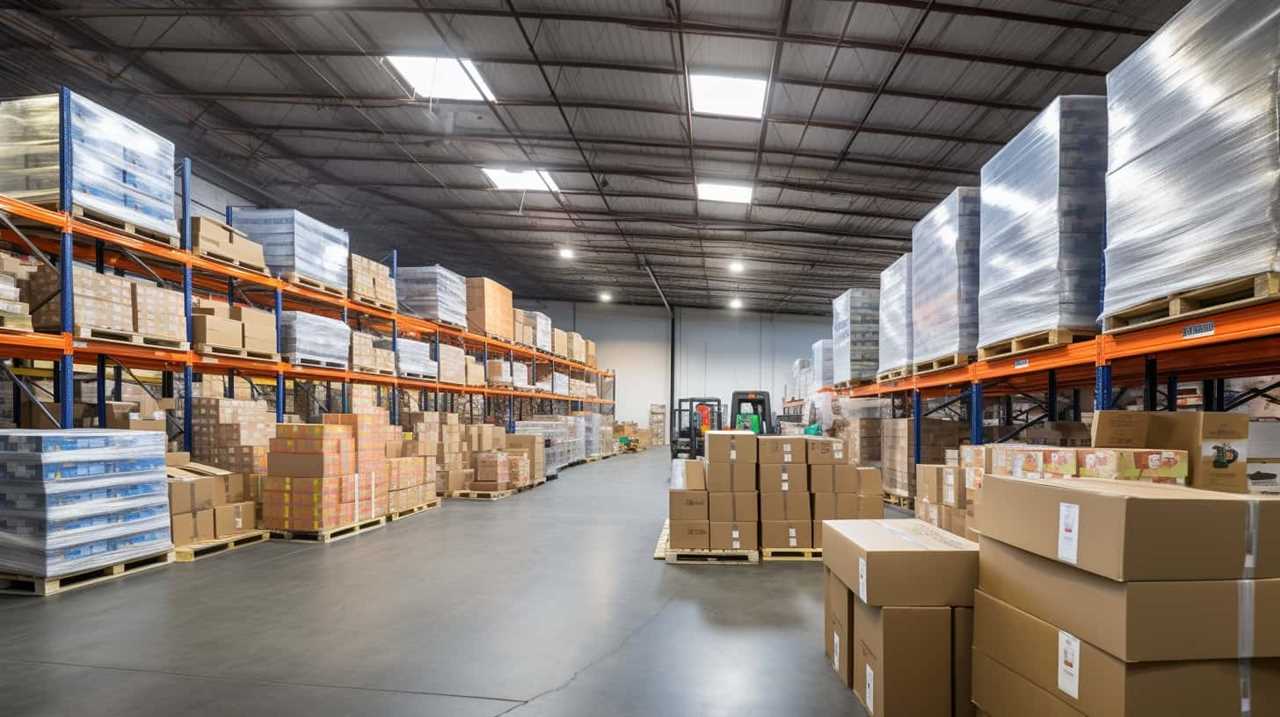
Heat as a Byproduct of Energy Consumption
When it comes to energy consumption, heat is often a byproduct that can’t be avoided. As energy is converted from one form to another, such as from electricity to mechanical energy, some of it’s lost as heat.
This heat production is inherent to the efficiency of the energy conversion process, and understanding it’s crucial for optimizing appliance design and minimizing energy waste.
Energy Conversion and Heat
Energy conversion processes in appliances naturally result in the production of heat as a byproduct. When energy is converted from one form to another, such as electrical energy to mechanical energy, a certain amount of heat is generated. This heat needs to be managed effectively to prevent overheating and ensure optimal functioning of the appliance.
To understand the role of heat management in energy conversion, consider the following points:

- Heat dissipation: Appliances are equipped with cooling mechanisms, such as fans or heat sinks, to dissipate the heat generated during energy conversion. These mechanisms help maintain the temperature within safe limits.
- Thermal insulation: Some appliances require thermal insulation to minimize heat loss and improve energy efficiency. Insulating materials, such as thermal barriers or coatings, can be used to reduce heat transfer and improve overall performance.
- Heat recovery: In certain cases, the heat produced as a byproduct can be captured and utilized for other purposes. This approach, known as heat recovery, helps improve the energy efficiency of appliances by utilizing the excess heat.
Understanding the relationship between energy conversion and heat management is crucial for optimizing appliance performance and ensuring efficient energy utilization.
Now, let’s delve into the next section and explore the connection between efficiency and heat production.
Efficiency and Heat Production
Appliances generate heat as a natural byproduct of energy consumption, which affects their overall efficiency. Heat production is a significant concern in appliance design, as excessive heat can lead to reduced performance, increased energy consumption, and potential damage to the device.
To address this issue, manufacturers employ various heat transfer mechanisms and thermal management strategies to ensure efficient operation and prevent overheating. These strategies include the use of heat sinks, fans, and insulation materials to dissipate or contain heat, as well as optimizing the design and materials to minimize heat generation.

By implementing these measures, appliances can operate at their optimal efficiency and prolong their lifespan.
Now let’s explore the impact of heat production on appliance efficiency.
Impact of Heat Production on Appliance Efficiency
Our research has revealed that the heat produced by appliances can have a significant impact on their efficiency. The excess heat generated during the operation of appliances can lead to various issues that affect their overall performance and lifespan.
Here are three key points to consider regarding the impact of heat production on appliance efficiency:

- Reduced Efficiency: When appliances generate excessive heat, it can cause them to operate less efficiently. This is due to the additional energy required to dissipate the heat, which results in higher energy consumption and decreased performance.
- Increased Wear and Tear: The constant exposure to high temperatures can accelerate the wear and tear of appliance components. This can lead to premature failure and a shorter lifespan, ultimately requiring costly repairs or replacements.
- Heat Management Techniques: Implementing effective heat management techniques, such as proper ventilation and insulation, can mitigate the negative impact of heat on appliance efficiency. By minimizing heat buildup and optimizing cooling mechanisms, appliances can operate more efficiently and have a longer lifespan.
Understanding the impact of heat on appliance efficiency is crucial for maintaining optimal performance and longevity. By employing appropriate heat management techniques, users can maximize the efficiency and lifespan of their appliances.
Importance of Heat Dissipation in Appliance Design
To ensure optimal performance and prevent damage, it’s crucial for designers to prioritize heat dissipation in the design of appliances. Heat dissipation techniques and thermal management strategies play a vital role in maintaining the reliability and longevity of appliances. Effective heat dissipation helps to regulate the temperature within an appliance, preventing components from overheating and potentially failing. By implementing appropriate heat dissipation methods, designers can enhance the overall efficiency and functionality of appliances.
There are various heat dissipation techniques that can be employed in appliance design, such as heat sinks, fans, and thermal insulation. These techniques help to dissipate excess heat generated by the appliance, ensuring that it operates within safe temperature limits. Thermal management strategies involve the careful placement of components, optimizing airflow, and improving heat transfer to minimize the risk of overheating.
Common Causes of Excessive Heat in Appliances
As we delve into the topic of common causes of excessive heat in appliances, it’s important to understand the factors that contribute to this issue. Excessive heat in appliances can be caused by a variety of factors, many of which can be easily addressed.
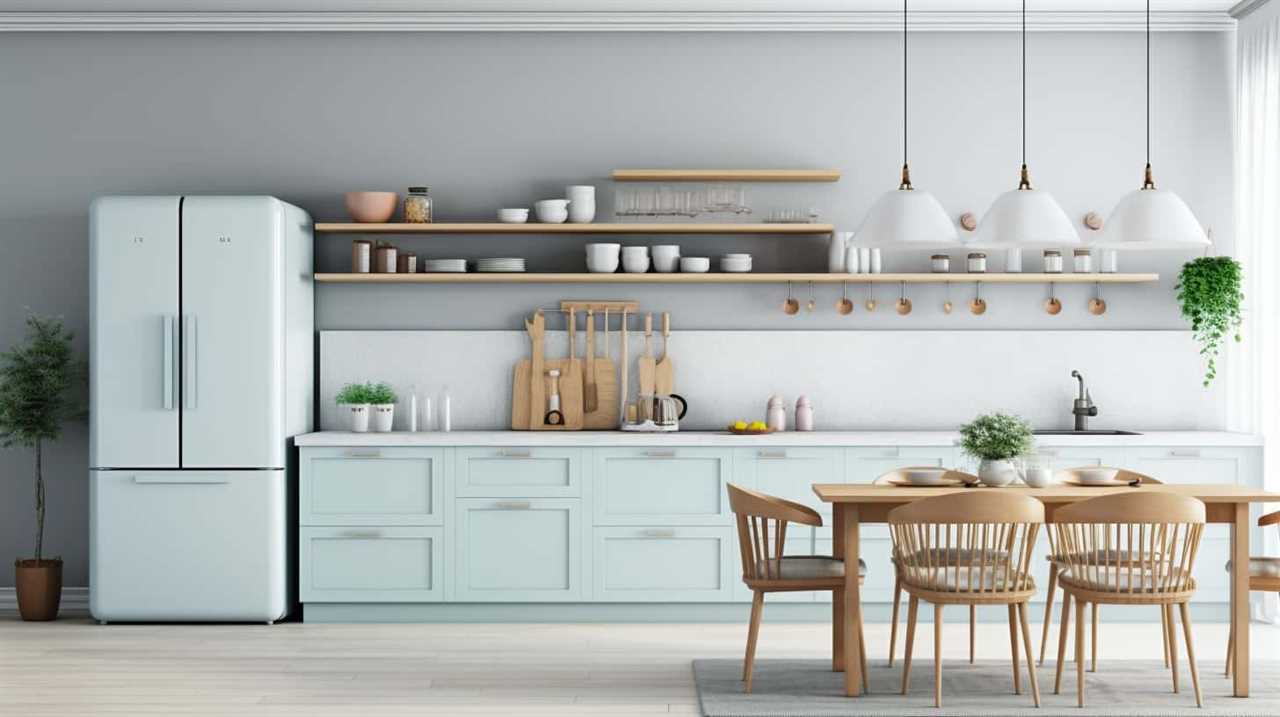
Here are three basic causes of excessive heat in appliances:
- Poor ventilation: Appliances that aren’t properly ventilated can trap heat inside, leading to excessive heat buildup. This can be due to blocked air vents or insufficient airflow around the appliance.
- Overloading: When appliances are overloaded with excessive amounts of work, they tend to generate more heat as they work harder to meet the demand. It’s important to use appliances within their recommended capacity limits to avoid excessive heat generation.
- Faulty components: Appliances with malfunctioning or worn-out components can generate excessive heat. This can be caused by damaged fans, clogged filters, or faulty wiring. Regular maintenance and timely component replacements can help prevent excessive heat due to faulty components.
Tips for Managing Heat From Appliances
Three tips for managing heat from appliances are to ensure proper ventilation, avoid overloading, and regularly maintain and replace faulty components. Proper ventilation is crucial to prevent heat buildup in appliances. Make sure that there is enough space around the appliance for air to circulate freely. Avoid placing appliances in enclosed areas or near flammable materials that could restrict airflow. Overloading appliances can cause them to work harder and generate more heat. Follow the manufacturer’s guidelines for load capacity and avoid exceeding it. Regular maintenance and replacement of faulty components such as fans, filters, and coils can help optimize appliance performance and reduce heat output. By implementing these heat management techniques for appliances, you can ensure their longevity and prevent potential safety hazards.
Below is a table highlighting the key tips for reducing heat from appliances:
| Tips for Reducing Heat from Appliances |
|---|
| Ensure Proper Ventilation |
| Avoid Overloading |
| Regularly Maintain and Replace Faulty Components |
Frequently Asked Questions
Can Appliances Produce Heat Without Consuming Electricity?
Appliances cannot produce heat without consuming electricity. However, alternative sources of heat production in appliances include gas, solar, and biomass. These potential energy sources can be used to generate heat in various appliances.
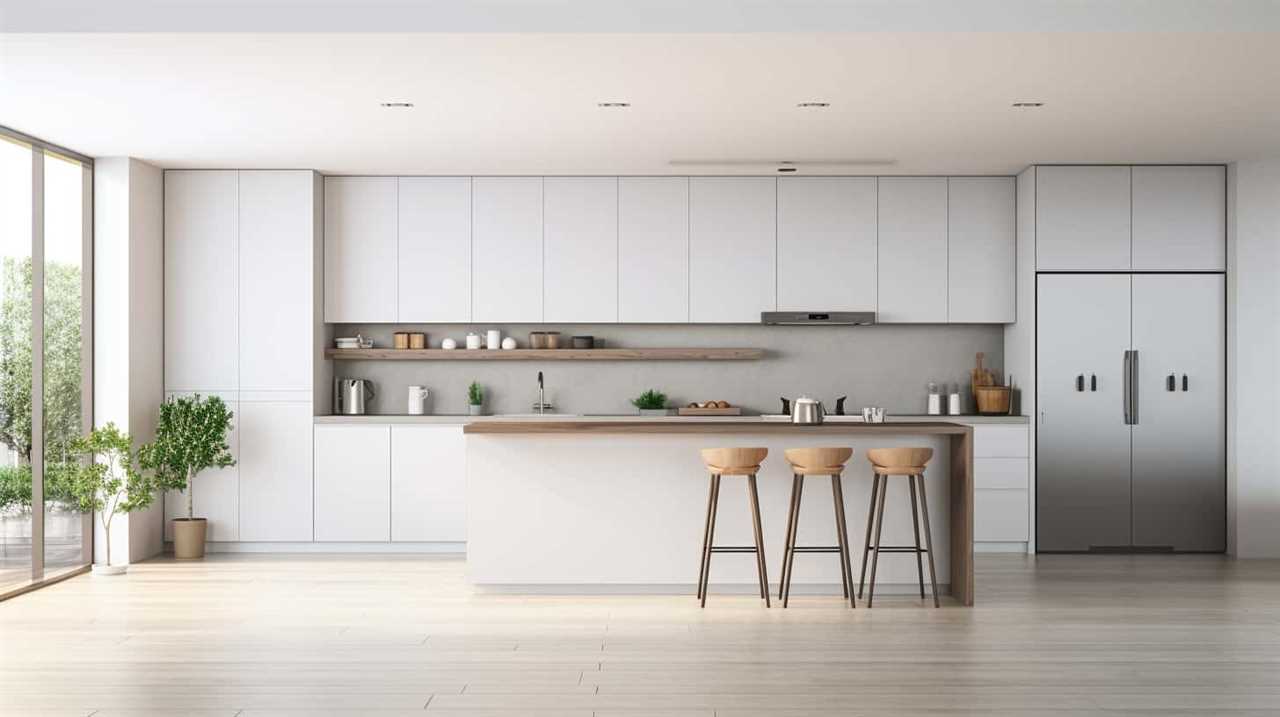
How Does the Size of an Appliance Affect Its Heat Production?
The size of an appliance has a significant impact on its heat production. Larger appliances generally produce more heat due to their greater surface area. However, the effect of insulation and ventilation can also influence heat output.
What Are Some Examples of Appliances That Produce Heat Through Mechanical Components?
Examples of appliances that produce heat through mechanical components include refrigerators, air conditioners, and washing machines. These appliances use compressors, motors, and pumps to generate heat as a byproduct of their operation.
Is Heat Production Always a Negative Aspect of Energy Consumption in Appliances?
Heat production in appliances can have positive aspects. For example, it can be used for cooking, heating water, and drying clothes. Additionally, alternatives to electricity consumption for heat production include gas and solar power.
How Does Heat Dissipation Affect the Lifespan of an Appliance?
Heat dissipation has a significant impact on an appliance’s lifespan. Excessive heat can cause components to degrade or fail. To reduce heat generation, efficient cooling systems and proper ventilation are crucial.

Conclusion
In conclusion, appliances aren’t just handy tools, they’re also miniature heat factories! From electrical energy conversion to mechanical components, these devices generate heat as a byproduct of their operation.
While excessive heat can affect appliance efficiency, proper heat dissipation is crucial for their design.
So next time you feel the warmth radiating from your appliances, remember that they’re working hard, and maybe even heating up your space more than you thought!
